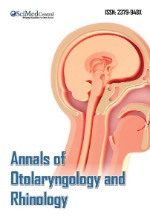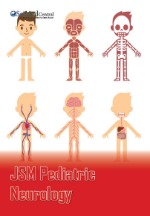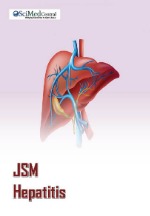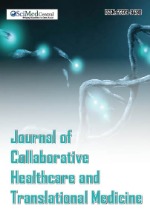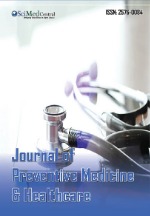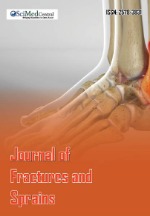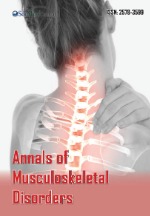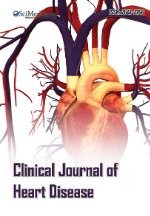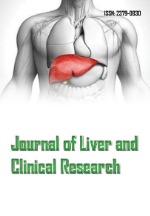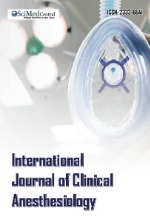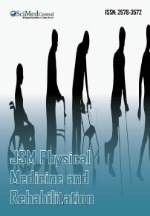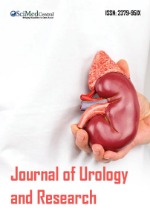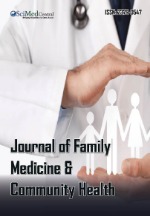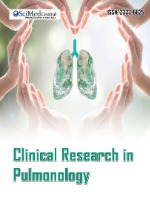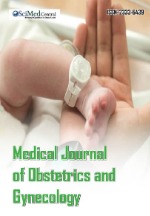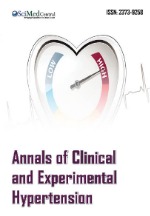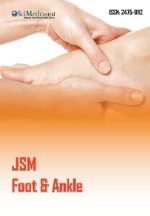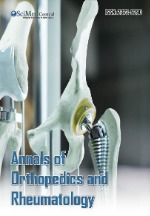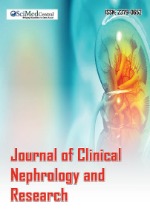Healthcare Infrastructure Prioritization using Machine Learning
- 1. World Bank, United States
- 2. Universidad Peruana de Ciencias Aplicadas, Peru
ABSTRACT
The present effort presents a novel methodology for prioritizing healthcare infrastructure interventions to enhance resilience against climate-related hazards. Given the increasing frequency and severity of extreme weather events due to climate change, the study emphasizes the urgent need for effective prioritization strategies in healthcare systems, especially in low- and middle-income countries where resources are limited. The application of this methodology is illustrated through case studies in Colombia and Peru, highlighting regions with significant healthcare infrastructure at risk from flooding. The findings underscore the critical role of data-driven decision-making in enhancing healthcare resilience, ultimately aiming to safeguard health services and improve patient outcomes in the face of climate change.
KEYWORDS
- Healthcare Infrastructure
- Climate Resilience
- Prioritization Methodology
- Floods; Landslides
- Low- and Middle-income countries
CITATION
Nunez-del-Prado M, Barrera J, Qaiser S, Tariverdi1 M (2024) Healthcare Infrastructure Prioritization using Machine Learning. Ann Com- munity Med Pract 9(2): 1060.
INTRODUCTION
Recently, healthcare infrastructure prioritization has become an active research topic. The conversation has ranged from benefit-cost ratio-driven prioritization of healthcare infrastructure projects [1]; component-driven prioritization such as water, physical structure, governance, service, and surveillance for healthcare facilities for different hazards [2]; and resilient-driven prioritization of healthcare facilities based on their resilience as assessed through the Critical Infrastructure Resilience Index (CIRI) over various phases of crisis management [3].
Climate change refers to the long-term changes in temperature and weather patterns [4]. Consequences of climate change include an increase in the severity and frequency of extreme weather events. In the process, this causes disruption and damage to key infrastructure: energy, transportation, water, etc [5].
When it comes to human health, these events can lead to adverse outcomes. For instance, floods can significantly impact health services and patient care delivery by causing fire shocks when electrical systems or equipment is affected, exposing them to toxic chemicals and infectious water, causing loss of lighting, heating, and cooling, contaminating equipment and supplies, and causing structural damage to buildings [6]. Landslides can cause disruptions to trans- port systems, in addition to creating health concerns such as diarrheal and vector-borne diseases, and respiratory and skin infections. Trauma and hazards associated with landslides can also cause broken electrical, water, gas, and sewage lines and disrupt roadways and railways, preventing people from being able to access health care.
Beyond human health, climate change events, such as floods, landslides, and other disasters, have the potential to damage health care infrastructure, affecting the quality and availability of health care [7]. Interruptions in supply chains, communications, and other networks may impact the provision of basic health services. These disruptions can affect patient safety and worsen health out- comes. For instance, power outages caused by intense heat may result in issues if patients do not have access to cooling devices or medical supplies requiring energy.
Despite these enormous impacts on human health and safety, the literature on methods to prioritize health care interventions is limited, and infrastructure prioritization is even more scarce. Thus, in the present effort, we propose a methodology to prioritize healthcare infrastructure interventions to improve infrastructure resilience.
Costa Rica is at risk of flooding due to increasing frequency and intensity of rainfall as a consequence of climate change [8]. 78 percent of the country’s population resides in areas at high risk of multiple hazards. A majority of Costa Rica’s emergencies constitute of flooding, landslides, and rising tides. Climate change is expected to cause localised flooding in urban areas and an estimated 7 million and 30 million USD is expected to be lost due to hydrometerological disasters by 2030 and 2050, respectively. Furthermore, poor planning and unstable human settlements have led to increased vulnerability to adverse climate events, endangering water and sanitation systems in the process.
In response, Costa Rica has built a disaster response system which identifies actions to reduce vulnerability to public service systems including water and sanitation and health. The environment, climate change, and land use management have all been incorporated into risk management with the vision to integrate sustainability into economic development.
The rest of the paper is organized as follows. First, Section 2 presents the state of the art. Section 3 describes the methodology of our approach, while Section 4 shows the result of our approach in two countries. Finally, Section 5 concludes the paper and illustrates new research avenues.
LITERATURE REVIEW
Public health practitioners often face the challenge of prioritizing investments amongst limited funding [9], and must use various frameworks in order to prioritize investments. In particular, in low-and-middle-income countries, spending on health makes up approximately five percent of general government expenditure [10]; this limited spending in the health sector as a proportion of the total national budget means that prioritizing expensive infrastructure investment is crucial [11]. Still research on infrastructure prioritization based on selected criteria remains limited.
In Indonesia, a benefit cost ratio method was applied to prioritize policy in the health infrastructure sector. In particular, the Analytic Hierarchy Process (AHP) was applied whereby selected criteria with their own weighting are applied to the available options to determine the best choice [12]. An AHP model was also used by Akhrouf to select the best health infrastructure projects in Algeria while taking socioeconomic, political, and other macro-level criteria into consideration [13].
AHP is only one of several other multi-criteria decision- making models. Marsh et al., applied a multi-criteria decision analysis approach to identify which public health investment to undertake [14]. The criteria included incremental cost effectiveness, proportion of the population eligible, distribution of benefits, affordability, and certainty.
In China, Lan et al., investigated whether investment efficiency is lower where a government prioritizes equity and which geographical predispositions should be taken into account in governmental investment plans for hospital infrastructures [15]. A concentration index was used to evaluate the equity in the distribution of hospital infrastructure. Results showed that investment efficiency was higher when equity was prioritized as opposed to regional economic development.
In Tanzania, a multi-step approach was taken to understand efforts to improve primary health facility infrastructure including assessing construction rates, geographical coverage, physical status, safe surgery situation, and services rendered [12].
These studies use various criteria in their decision-making that are most relevant to their respective context but evaluation of investments against the backdrop of climate change is notably missing. This paper seeks to fill this gap by proposing a methodology which takes climate change and its effect on vulnerable populations into account. Furthermore, this appears to be the first study of its kind to identify specific infrastructure most at risk from a geographic perspective.
METHODOLOGY
In this section, we introduce a versatile methodology designed for prioritizing health infrastructure investments aimed at enhancing system resilience and preparedness for potential shocks.
The proposed prioritization methodology comprises three stages: (1) categorizing sub national regions according to varying levels of risk, (2) quantifying the distance matrix of healthcare facilities to assess redundancy, and (3) evaluating the state of healthcare facilities’ infrastructure. These steps enable the prioritization of healthcare facilities at both national and sub-national levels, as illustrated in Figure 1. The subsequent paragraphs provide a detailed description of each stage of the methodology.
Figure 1 Healthcare infrastructure prioritization methodology.
The first step involves classifying administrative sub-national regions into distinct risk clusters: very high, high, medium, and low risk. In this context, risk is defined as the interaction between exposure and vulnerability [7,16]. Exposure refers to the number of individuals and assets located in areas prone to hazards, while vulnerability encompasses conditions influenced by physical, social, economic, and environmental factors that heighten the susceptibility of individuals or communities to the adverse impacts of hazards. Hazards are de- fined as phenomena that can cause negative effects such as loss of life, injury, infrastructural damage, and social or economic disruption.
They are characterized by their location, intensity, frequency, and probability of occurrence. The administrative sub-national regions can be defined at various levels, including regions, departments, provinces, municipalities, or districts. In this step, our methodology utilizes the vulnerability characteristics of the selected administrative level to assess risk for specific hazards, such as floods or landslides.
Regarding the variables used to capture vulnerability, it is important to note that not all countries collect the same set of variables through censuses, house- hold surveys, or other data surveys. Consequently, this phase of our methodology is agnostic to the specific input variables. For example, one country might use indicators such as access to clean water, vaccination rates, and illiteracy levels to capture vulnerability for assessing risk, while another country might use variables such as internet access, unmet basic needs, and the number of staffed beds. Despite these differences vulnerability variables, the output will consistently be the classification of sub-national regions into their respective risk groups at the selected administrative level using the k-means unsupervised learning algorithm [17], with k=4 to have the aforementioned risk groups. For example, Region A with high risk, Region B with low risk, etc.
The k-means algorithm is a method used to group similar items together into clusters. K-means starts by picking a set number of initial points, called centroids, to represent the center of each group. It then assigns each point to the nearest centroid, forming clusters. After assigning points, it updates the centroids to be the average location of all points in each cluster. This process of assigning points and updating centroids repeats until the clusters no longer change significantly, resulting in a clear grouping of the points.
The objective of the second step is to evaluate healthcare service redundancy by quantifying the distance to the nearest healthcare facility of the same complexity, in order to assess whether a community could lose access to essential health services. This step utilizes the transportation network to calculate travel times to healthcare facilities. For example, in Figure 2, community A takes 15 minutes (t AC=15) to reach the nearest healthcare facility, hospital C, of category II (t AD + t DE
+ t EB + t BC = t AC), and 45 minutes (t AH=15) to reach hospital H, the second closest facility of the same category, it indicates that community A has good redundancy. However, if the time to reach hospital H is four hours (t AH=240), then community A has poor redundancy, and hospital C becomes critically important for health service delivery. Therefore, the road network is crucial for individual transportation and access to healthcare services delivery and access.
This module receives as input the road network, and healthcare facilities location in terms of latitude and longitude. The road networks is modeled as a graph G (V, E). A graph is a structure that models how things are connected or related. Thus, the vertices V represent the road intersections and the edges E represent the roads weighted with the average time to pass through the road segment as shown in Figure 2. Based on location of the healthcare facilities, the methods computes the shortest paths among healthcare facilities of the same complexity level.
This module takes as input the road network and the locations of healthcare facilities, specified by their latitude and longitude. The road network is represented as a graph G (V, E), where the vertices V denote road intersections and the edges E represent the roads, weighted by the average travel time required to traverse each road segment, as illustrated in Figure 2. Using the locations of the healthcare facilities, the method calculates the shortest paths between facilities of the same complexity level. The shortest path is computed using the Dijkstra’s algorithm [18], which finds the shortest path from a starting point to all other points in a network, like a map with cities connected by roads. It starts at the initial point and looks at all directly connected points, choosing the one with the smallest travel cost. It then updates the cost to reach other connected points based on this shortest path and repeats the process, moving outwards from the starting point. By the time it has considered all points, it has determined the shortest path from the start to every other point in the network.
Figure 2 Example of a graph structure modeling transportation network.
Consequently, the distance matrix records the time t required to reach the nearest redundant healthcare facility of the same complexity level. It is important to note that the method uses travel time rather than physical distance, as two healthcare facilities might be geographically close but may require a significant amount of time to travel between them due to geographic constraints.
The third step is designed to evaluate the condition of healthcare infrastructure, classifying it as either poor or good. This assessment can be based on building characteristics such as the year of construction, the date of last maintenance, or the type of wall material. For example, a facility built in 1980 with no recent maintenance might be considered in poor condition, whereas a facility built in 2020 with regular updates might be deemed in good condition. Additionally, fragility curves can be employed to gauge infrastructure quality. A fragility curve is a graph that illustrates the likelihood of damage as the intensity of a hazard, such as a landslide or flood, increases. The curve plots hazard intensity on one axis and the probability of damage on the other, helping predict how a building or structure might fare under varying hazard conditions. For instance, a fragility curve for a hospital might show that the probability of significant damage increases significantly with higher earthquake magnitudes, indicating higher vulnerability. Both methods help assess how well the physical infrastructure can withstand climate-related hazards like floods and landslides. It is crucial to recognize that infrastructure damage can lead to reduced health service availability.
Thus, in this step, the condition of healthcare infrastructure is quantified using fragility curves for each hazard type. These curves are developed based on factors such as building typology, intensity measures, and damage states. However, not all countries, particularly low- and middle-income countries, may have access to this detailed information. In the absence of fragility curves, alternative indicators, such as general assessments of infrastructure condition (e.g., good, fair, poor) or data on construction and maintenance dates, can be used as proxies for evaluating infrastructure state. For instance, some countries may use a rating system where a building’s condition is classified as ”good” if it was recently renovated, or ”poor” if it has not been maintained for many years.
Based on the analysis of risk groups, including hazard exposure and vulnerability, healthcare facility redundancy, and infrastructure condition, the final module determines prioritization at national or sub-national levels. Healthcare facilities situated in high-risk areas, with low redundancy, and poor infrastructure conditions are given higher priority, as illustrated in Figure 3. For instance, a healthcare facility located in a high-risk area, distant from other equivalent facilities, and with regular or poor infrastructure, will be prioritized for intervention. This is because the community served by such a facility would face greater challenges if it were to be lost. Consequently, this facility becomes a prime candidate for upgrades, such as enhancing its resilience or improving transportation links to nearby healthcare facilities. The output of this module is a map that identifies the top healthcare facilities to prioritize for intervention at both national and subnational levels.
Figure 3 Example of the three metrics risk, redundancy, and healthcare infrastructure state for prioritization.
RESULTS
In this section, we present the results of the healthcare infrastructure prioritization analysis focused on floods for two South American countries: Colombia and Peru. It is important to note that flood hazards were selected for this analysis due to space constraints, although other hazards were also considered. Additionally, flooding was identified as a critical hazard for evaluation by the Ministries of Health in both countries. Concerning Colombia, about 1 out of 5 health facilities are directly exposed to disruptive floods. This includes 4,416 primary care facilities and 143 hospitals. Impacts of floods on health infrastructure are also substantial due to disruption to water, power, and communication networks as well as impaired accessibility to facilities. Guaviare, Choc´o and Amazonas are the departments with the most exposed healthcare infrastructure to floods. Inundation of buildings and parking areas from floodwaters can drastically reduce functionality, and close facilities in some cases.
Applying the methodology described in Section 3, climate- sensitive risk is being computed for all health facilities. The information then is integrated with health system characteristics and redundancy to identify the healthcare facilities most at risk to establish a ranking of the top ten healthcare facilities (Primary Health Care facilities (PHCs), hospitals Category II, III) that should be prioritized at the a national level. Accordingly, the analysis was performed for PHCs and hospitals. The former shows regions of Bolivar with five of ten PHCs at risk, as detailed in Figure 4. In case the name of PHC was unavailable, or two PHC share the same name, each facility is identified through its unique identifier code in Table 1.
Figure 4 Healthcare infrastructure prioritization at national and subnational level for floods in Colombia.
Table 1: List of top ten PHC to prioritize at national level in Colombia. Incase the name of PHC was unavailable, or two PHC share the same name, each facility is identified through its unique identifier code.
|
PHCID |
Name |
Department |
|
135490035501 |
– |
Bol´?va |
|
135490009501 |
Hospital San Nicolas de Tolentino |
Bol´?var |
|
135490009504 |
Hospital San Nicolas de Tolentino |
Bol´?var |
|
110010101031 |
– |
Bogota,D.C. |
|
135490009506 |
Hospital San Nicolas de Tolentino |
Bol´?var |
|
257540380801 |
– |
Cundinamarca |
|
763640375607 |
– |
Valle del Cauca |
|
763641109802 |
– |
Valle del Cauca |
|
135490009503 |
Hospital San Nicolas de Tolentino |
Bol´?var |
|
810010053901 |
– |
Arauca |
The hospital analysis identifies Valle del Cauca and Magdalena as the only departments with two hospital category IIIs at risk of floods, as depicted in Figure 4 and Table 2. Additionally, Figure 4 presents the three healthcare facilities for each region with the highest exposure to floods at the bottom panel. Regarding PHCs, we note the departments in the north have more PHCs at risk of floods, while most affected hospitals are in the west and north of Colombia, as described in Table 1, respectively. Bolivar and Valle del Cauca have PHCs prioritized for floods risks, and Valle del Cauca and Antioquia have prioritized hospitals as show in Table 2.
Table 2: List of top ten hospitals to prioritize at national level in Colombia.
|
Hospital ID |
Name |
Department |
|
760010511501 |
Hospital Isaias Duarte Cancino |
Valle del Cauca |
|
|
Empresa Social del Estado |
|
|
134680049204 |
Hospital la Divina Misericordia |
Bol´?var |
|
|
sede San Juan de Dios |
|
|
51540220101 |
Hospital Cesar Uribe Piedrahita |
Antioquia |
|
472450024901 |
Hospital La Candelaria |
Magdalena |
|
270010116901 |
Hospital Departamental San |
Choc´o |
|
|
Francisco de Asis |
|
|
768340465201 |
Hospital Departamental Tomas |
ValleDelCauca |
|
|
Uribe de Tulua |
|
|
470010065001 |
Hospital Universitario Julio |
Magdalena |
|
|
Mendez Barreneche |
|
|
810010007701 |
Hospital San VicenteE |
Arauca |
|
680810079701 |
Hospital Regonal del Magdalena |
Santander |
|
|
Medio |
|
|
110013029640 |
Unidad de servicios de salu dsan- bernardino |
Bogota,D.C. |
Regarding Peru, our methodology allows us to prioritize national and subnational health care facilities, giving policy makers information to make decisions about how to distribute limited monetary resources. To prioritize healthcare facilities for intervention, the analysis first characterizes the region’s vulnerability, based on average percentages of exposed population, Indigenous population, poor people with at least one unsatisfied basic need, malnutrition, the highest category healthcare facility in the district (normalized), and distance to closest health care facility of the same category.
As depicted in Figure 5, PHCs are at risk in Piura and Huancavelica regions, and the greatest number of hospitals at risk of floods are in Piura region. Integrating this information with population and health system characteristics established a ranking of the top 10 PHCs and hospitals to prioritize at national and regional levels. The analysis finds that Piura and Huancavelica have four and three PHCs at risk, respectively, while Piura has the greatest number of hospitals at risk of floods (Figure 5 and Table 3).
Figure 5 Healthcare infrastructure prioritization at national and subnational level for floods in Peru.
Table 3: List of top ten PHC to prioritize at national level in Peru.
|
ID |
Name |
Region |
|
3481 |
Huancano |
Ica |
|
5680 |
Ambar |
Lima |
|
2523 |
Urcos |
Cusco |
|
2141 |
EE.SS. El Tall´an |
Piura |
|
2137 |
EE.SS. Santa Rosa de Cura Mori |
Piura |
|
2140 |
EE.SS. Santa Rosa de Cura Mori |
Piura |
|
2139 |
Puesto de Salud Pozo de LosR amos |
Piura |
|
25935 |
Centro M´edico Sen˜or de Oropesa |
Huancavelica |
|
21272 |
Cl´?nica Healt hand Safety Occupational |
Huancavelica |
|
27766 |
Cl´?nica Vida |
Huancavelica |
The regional-level analysis shows the top three health care facilities to prioritize for floods in each region (Figure 5) bottom panel and notes that the coastal regions and those south of the Andes have more PHCs at risk of floods (Table 1), and most affected hospitals are on the coast (Table 4).
Table 4: List of top ten hospitals to prioritize at national level in Peru.
|
ID |
Name |
Region |
|
7719 |
Hospital Regional Guillermo D´?az de La Vega |
Apur´?mac |
|
7686 |
Hospital Regional Docente |
Cajamarca |
|
10723 |
Hospital Privadodel Peru´ |
Piura |
|
7874 |
Cl´?nica Feij´oo |
Tumbes |
|
13042 |
Cl´?nica Los Cocos |
Piura |
|
13727 |
Instituto M´edico Soy Diab´etico+ |
Piura |
|
14092 |
Cl´?nica Santivan˜ez |
Piura |
|
7635 |
Hospital de Barranca |
Lima |
|
6219 |
Hospital San Jos´e |
Callao |
|
13165 |
Centro de Reposo San Juan de Dios |
Piura |
CONCLUSION
The study presents a robust methodology for prioritizing healthcare infrastructure interventions to enhance resilience against climate-related hazards, specifically floods and landslides. By employing a three-stage approach that categorizes administrative territories based on risk, assesses healthcare facility redundancy, and evaluates infrastructure conditions through fragility curves, the methodology effectively identifies healthcare facilities most vulnerable to climate impacts. The application of this framework in Colombia and Peru highlights significant findings: approximately 20% of healthcare facilities in Colombia are at risk from floods, with certain regions, such as Guaviare and Choc´o, being particularly vulnerable. In Peru, the analysis indicates that regions like Piura and Huancavelica require urgent attention due to the high number of health- care facilities exposed to flooding. The results underscore the critical need for data-driven decision-making in healthcare infrastructure investment, especially in low- and middle-income countries where resources are constrained. By prioritizing interventions based on vulnerability and redundancy, policymakers can ensure that healthcare services remain accessible and functional during climate- related emergencies. This work contributes to the growing body of literature on healthcare infrastructure resilience and provides a practical tool for enhancing the adaptive capacity of health systems in the face of climate change. Future research should focus on refining the methodology and exploring its applicability across diverse geographical contexts to further bolster healthcare resilience globally.
REFERENCES
- Bayu K, Andar Noor MZ, Sutyastie SR. Setting local government priorities in healthcare infrastructure using the analytical hierarchy process approach: The cases of local governments in west java province. Pub Admin Issues. 2019; 5: 155-182.
- Ryan BJ, Franklin RC, Burkle FM, Watt K, Aitken P, Smith EC, et al. Defining, Describing, and Categorizing Public Health Infrastructure Priorities for Tropical Cyclone, Flood, Storm, Tornado, and Tsunami- Related Disasters. Disaster Med Pub Health Prep. 2016; 10: 598-610.
- Barabadi A, Ghiasi MH, Nouri Qarahasanlou A, Mottahedi A. A holistic view of health infrastructure resilience before and after covid-19. Arch Bone Jt Surg. 2020; 8: 262-269.
- Sabah Al-Marwani. Climate change impact on the healthcare provided to patients. Bull Nat Res Centre. 2023; 47-51.
- Kumar N, Pooia V, Gupta BB, Goyal MK. A novel framework for risk assessment and resilience of critical infrastructure towards climate change. Technol Fore Social Change. 2021; 165: 120532.
- Del Prado Cortez MN, Tariverdi M, John Kevin Barrera Contreras, Garcia SO, Thompson D, Leonova N, et al. Climate risk assessments for health sector prioritization: People-centric, climate-sensitive integrated risk index for Peru. Technical report, World Bank Group. 2024.
- United Nations Office for Disaster Risk Reduction UNDRR. Sendai framework terminology on disaster risk reduction. 2024.
- Climate Risk Country Profile: Costa Rica. World Bank Group. 2021.
- Atwal S, Schmider J, Buchberger B, Boshnakova A, Cook R, White A, et al. Prioritisation processes for programme implementation and evaluation in public health: A scoping review. Front Public Health. 2023; 11: 1106163.
- World Bank Group. Domestic general government health expenditure.
- Bayu Kharisma, Sutyastie RS, Andar Noor MZ. Setting local government priorities in healthcare infrastructure using the analytical hierarchy process approach: The cases of local governments in west java province. Pub Admin Issues. 2019; 5:155-182.
- Kapologwe NA, Meara JG, Kengia JT, Sonda Y, Gwajima D, Alidina S, et al. Development and up- grading of public primary healthcare facilities with essential surgical services infrastructure: a strategy towards achieving universal health coverage in tanzania. BMC Health Serv Res. 2020; 20: 218.
- Mohamed Akhrouf, Mahfoudh Derghoum. The use of a multi-criteria decision support model based on the ahp method for the selection of health infrastructure projects. Int J Analy Hierar Process. 2023; 15.
- Marsh K, Dolan P, Kempster J, Lugon M. Prioritizing investments in public health: a multi-criteria decision analysis. J Pub Health. 2013; 35: 460-466.
- Lan T, Chen T, Hu Y, Yang Y, Pa J. Development, test and comparison of two Multiple Criteria Decision Analysis (MCDA) models: A case of healthcare infrastructure location. Front Pub Health. 2021; 9.
- Office for Outer Space Affairs UN-SPIDER Knowledge Portal. Disaster risk management. 2024.
- Steinley D. K-means clustering: a half-century synthesis. Br J Math Stat Psychol. 2006; 59: 1-34.
- Donald B Johnson. A note on dijkstra’s shortest path algorithm. JACM.1973; 20: 385-388.







